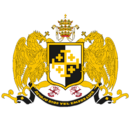Creeperian literature
| Part of a series on the |
| Culture of Creeperopolis |
|---|
 |
| Society |
| Topics |
| Symbols |
Creeperian literature is generally split into two categories: religious and secular. Religious literature is abundant in Creeperopolis, being written throuhgout virtually all of Creeperian history, while secular literature began to grow in popularity during the First Parliamentary Era. During the 1200s, 1300s, and 1400s, literature was promoted by the Creeperian monarchy to enshrine Creeperian Spanish as the dominant and primary language of Creeperopolis and slowly remove the Deltinian language from society.
During the Second Parliamentary Era, written works which were critical of the government became more abundant and accepted in society. Propaganda was spread by political parties to support or oppose a particular group or idea, especially during the Creeperian Civil War. Following the civil war, the Creeperian government began implementing nationwide censorship of communist, democratic, anti-government, and anti-religious works, including books, letters, poems, plays, manifestos, songs, journals, essays, and other written works.
Common topics which poets wrote about throughout Creeperian history include theology and philosophy. Famous Creeperian poets include Antonio Batrés González, Carlos Fernández Altamira, Hernando Quijano Estrada, Rubí Sáenz Heredia, Camilo Cela Trulock, Victoria Obregón Tassis, Juana Cruz Villatoro, Alexandra Buenaventura Jalisco, Simeón Cañas Villacorta, Eduardo Torroja Caballé, Gregorio Marañón Posadillo, Ramiro Yagüe Gallegos, Miguel Unamuno Jugo, José Ortega Gasset, among others.
